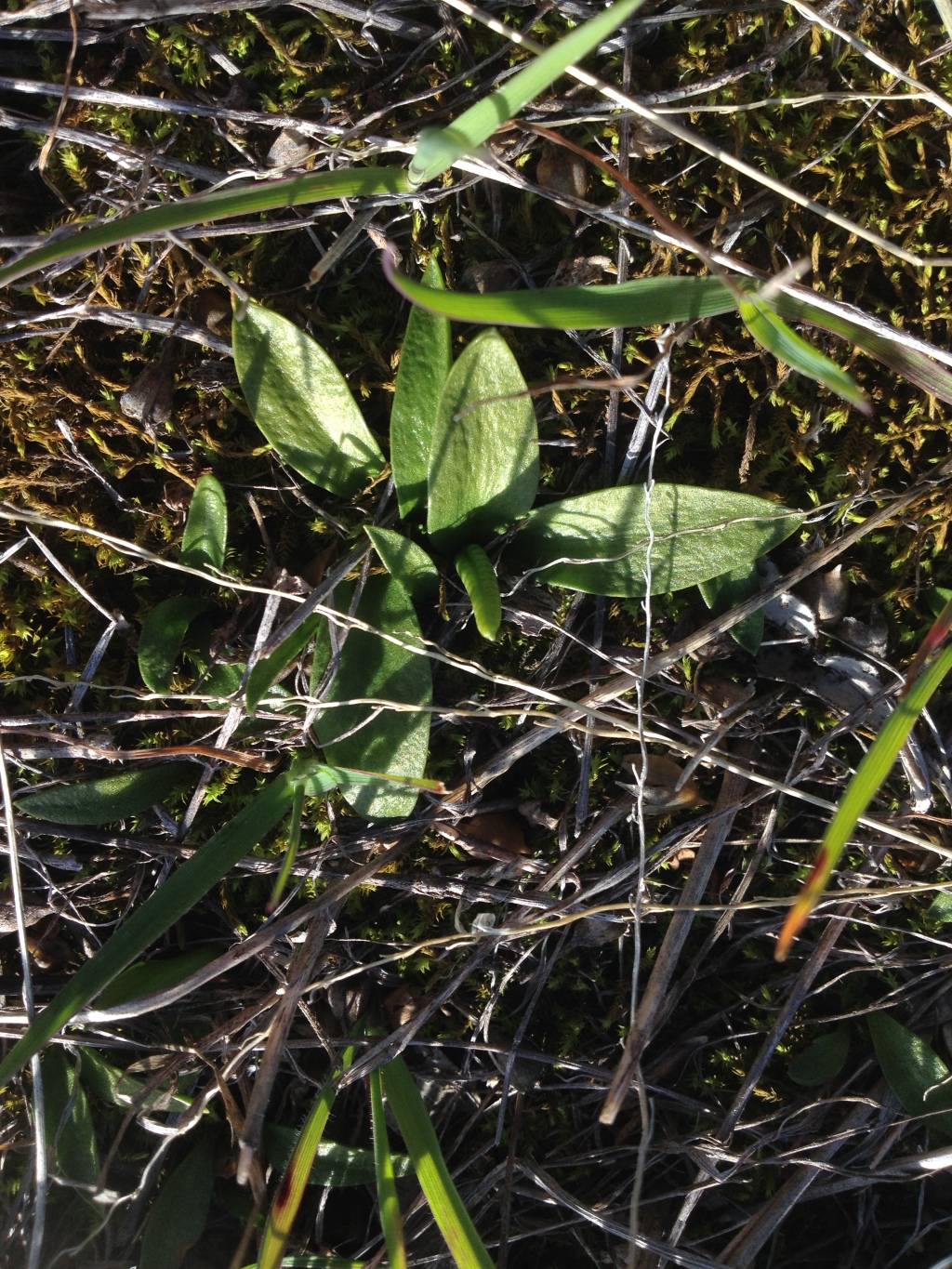Ophioglossum lusitanicum
L. Austral Adder's-tonguePlants 3–15 cm tall, with 1–4 fronds; usually colonial. Rhizome erect, short, tuberous; roots few, brittle, spreading, sometimes with vegetative buds. Stipe fleshy, partly below ground, not persistent. Lamina 1–4 cm long, somewhat fleshy, lanceolate, lanceolate-ovate to short-elliptic; base narrowing to long-cuneate, but sometimes broadly cuneate; veins often indistinct, forming network of areoles, some including free vein endings. Spike 5–15 mm long, on stalk up to 8 cm long, growing from base of sterile lamina; 6–15 pairs of sporangia per spike.
LoM, MuM, Wim, GleP, Brid, VVP, VRiv, RobP, MuF, GipP, WaP, Gold, CVU, GGr, DunT, NIS, EGL, EGU, HSF, HNF, MonT, HFE, VAlp. All States. Almost cosmopolitan. Mostly in damp soil of open-forest, heathland or grassland, and often beside streams.
Ophioglossum lusitanicum dies back in winter, but even when fully grown and fronds at their largest, plants are often inconspicuous. Although the lamina is usually much longer than broad (mostly more than 3 times), populations from some parts of the state (e.g. mallee areas, Gippsland and around Melbourne) have a lamina only twice as long as broad. See also notes under O. reticulatum.
Entwisle, T.J. (1994). Ferns and allied plants (Psilophyta, Lycopodiophyta, Polypodiophyta). In: Walsh, N.G.; Entwisle, T.J., Flora of Victoria Vol. 2, Ferns and Allied Plants, Conifers and Monocotyledons, pp. 13–111. Inkata Press, Melbourne.
 Spinning
Spinning



